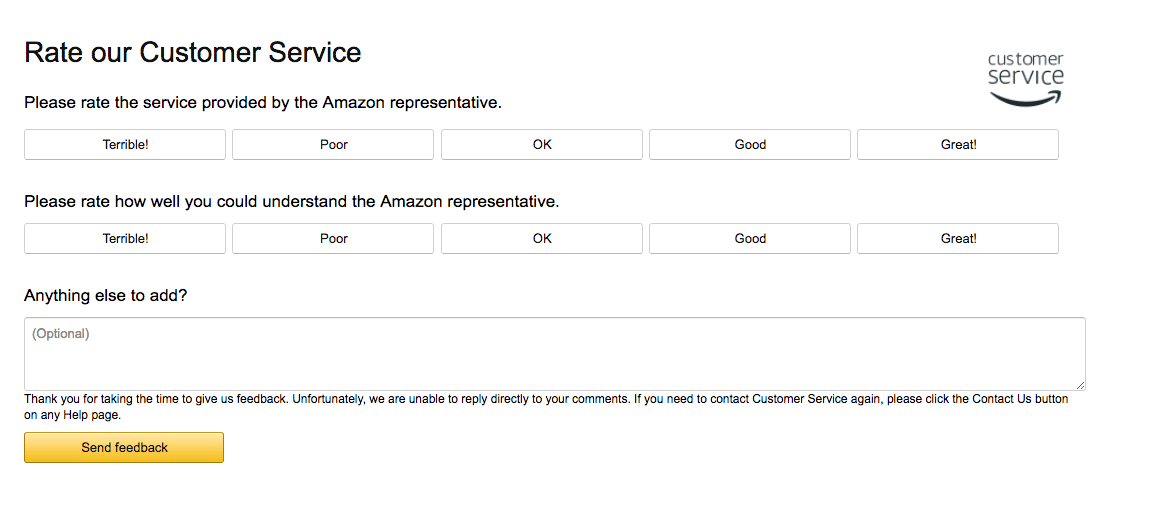Given that the customer is king, obtaining and acting on their feedback sets a company for success. The question is, how do you influence customers to provide constructive feedback in the face of reduced response rates and survey fatigue. The answer is to focus on creating a superior survey experience.
Customer satisfaction (CSAT) surveys are crucial to understanding your customer’s preferences and driving a more customer-centric organization. But the survey experience is just as important. Often CSAT surveys are disregarded and face low response rates. How can you overcome this challenge and increase respondent engagement?
Based on our consumer research experience, we’ve compiled 6 tips that can help increase your CSAT survey performance.
1. Setting the right expectation
By letting the customer know what the survey includes, how long it will take, and providing them with a copy of their results, you can boost customer participation. Showing gratitude and letting them know how valuable their feedback is to you is equally important. Personalized notes or even a simple mail of thanks can go a long way.
Slack, for example, sends a concise and well-crafted email calling consumers to fill a customer satisfaction survey, mentioning what it entails and how long it will take.

2. Provide a good incentive
Providing incentives and rewards for taking your surveys shows that you value your customer’s time. This could be in the form of gift cards and discounted coupon codes that customers can redeem the next time they use your product. You can even pique customer curiosity and create a buzz with a contest.
For instance, Taco Bell presents a clear, easy-to-understand format with a survey code highlighted on its bill. It further incentivizes its customers by offering rewards and, upon completion, enters them in a sweepstakes contest for a chance to win a cash prize!

3. Keep it short and simple
The average customer has an attention span of about 8 seconds. Lengthy surveys are not just expensive, but also prone to high abandonment rates. The ideal survey should not take more than 3.5-5 minutes. Keep it short and succinct for the best results. This further ensures you ask the right questions, with clearly defined objectives. Using multiple-choice options or yes/no formats can cater better to audiences. Adding open-ended questions at the end of your survey lets your customer express their opinion without getting annoyed or bored.

In this example from Amazon, they offer their customers a short survey consisting of star ratings for the quality of service, checkboxes defining the range of service options, and a box for additional comments. This prompt feedback response system after service not only encourages customers to fill it but also lets your brand take immediate action to resolve emerging problems.
Timing is everything. Studies also indicate that certain days and times tend to generate more responses than others. Sending a survey following a recent brand interaction further boosts customer engagement.
A Net Promoter Score (NPS) Survey is a short and effective SaaS metric that asks a single question to determine customer satisfaction.

Drift, for instance, utilizes NPS to measure customer satisfaction with this one question:

4. Offer multiple language options
Multilingual surveys let you gather customer feedback in their preferred language. This provides a better experience for your customers as it helps them understand your questions better, thereby increasing response rates and the quality of data.
5. Deliver an interactive online survey experience
The post-pandemic world is online. With an online survey option, you can capitalize on creating a user-friendly unique web experience for customers as they fill out their surveys.
Response time is almost instant with web-based surveys. In fact, online surveys take on average two-thirds less time to complete than traditional research methods like telephonic and in-person interviews. In this case, there’s no waiting period for the paper forms to come back, or telephonic and/or in-person interviewers to transcribe and compile their findings. With online surveys, there is a lower margin of error, it is cost-effective and there is greater room for flexibility. You can easily survey a large number of respondents and easily compile and analyze the data through a standardized process. Adding the element of anonymity further lends for more transparent, candid, and honest responses.
Netflix is a great example of this. Not only do they present clear questions with a rating scale for audiences to easily choose and respond, but they also tailor displayed content recommendations according to customer preferences.

6. Involve an independent research firm to enhance survey credibility
Involving an independent research firm can increase the credibility of your survey. Survey respondents often worry that their names will be directly associated with the feedback. They wonder what impact their feedback might have on future services and their relationship with the organization.
A third-party research firm’s involvement in a CSAT study can ensure confidentiality and allow customers to provide more honest answers. Furthermore, it enables you to conduct unbiased and independent CSAT surveys to compare customer satisfaction levels between your organization and your competitors. Using a third party can anonymize the research sponsor and provide more reliable results.
As more organizations strive to be customer-focused, obtaining customer feedback will only gain greater importance in the next decade. In order to collect quality data and drive customer-focused strategies, establishing a robust means to conduct customer satisfaction surveys will be crucial.
Netscribes is a leading research partner to organizations that seek high-quality customer insights. With over two decades of experience in the insights industry, multidimensional research capabilities, and technology expertise, we are better equipped to meet your data and insight needs than most research firms. Contact us to know more.






